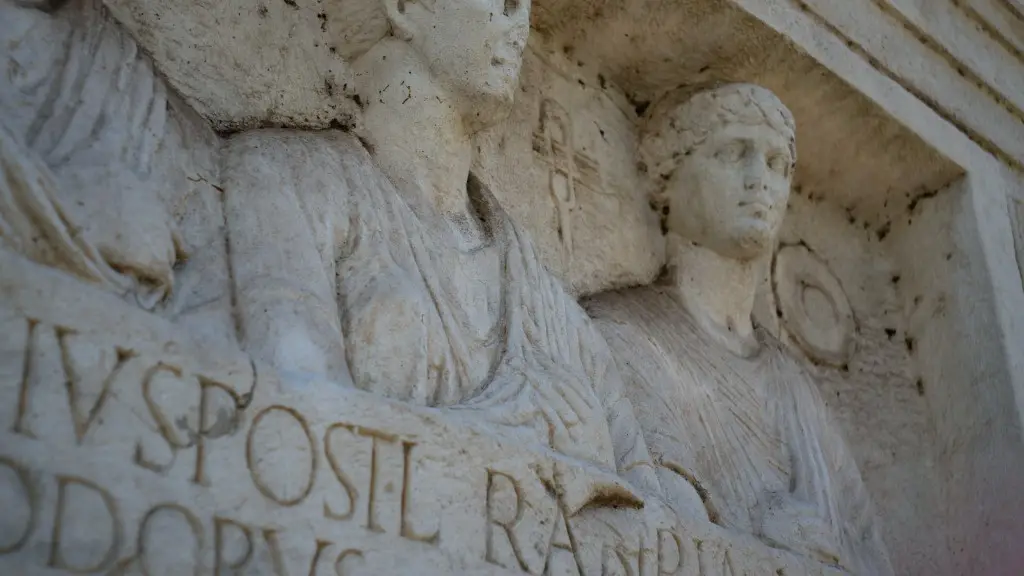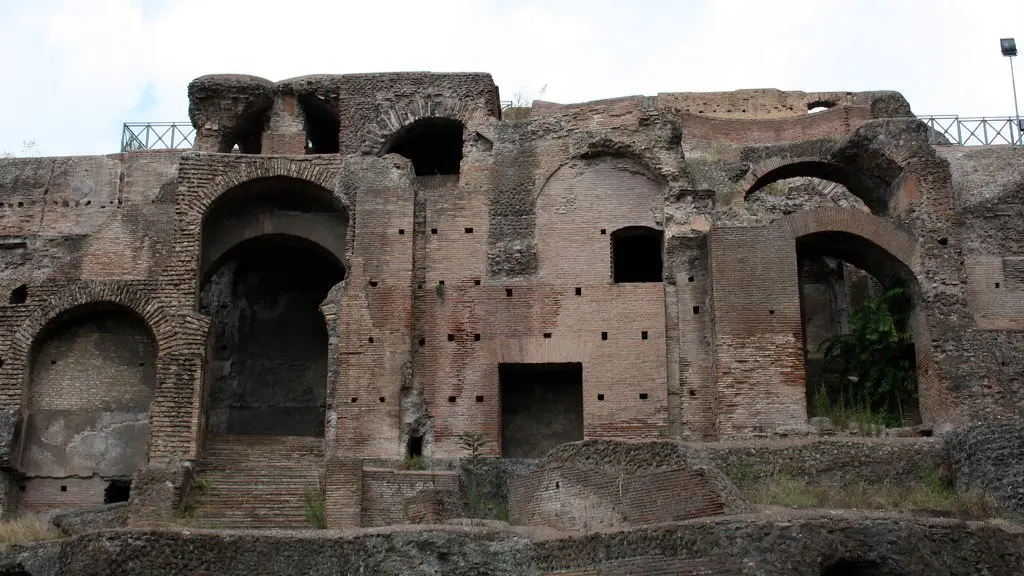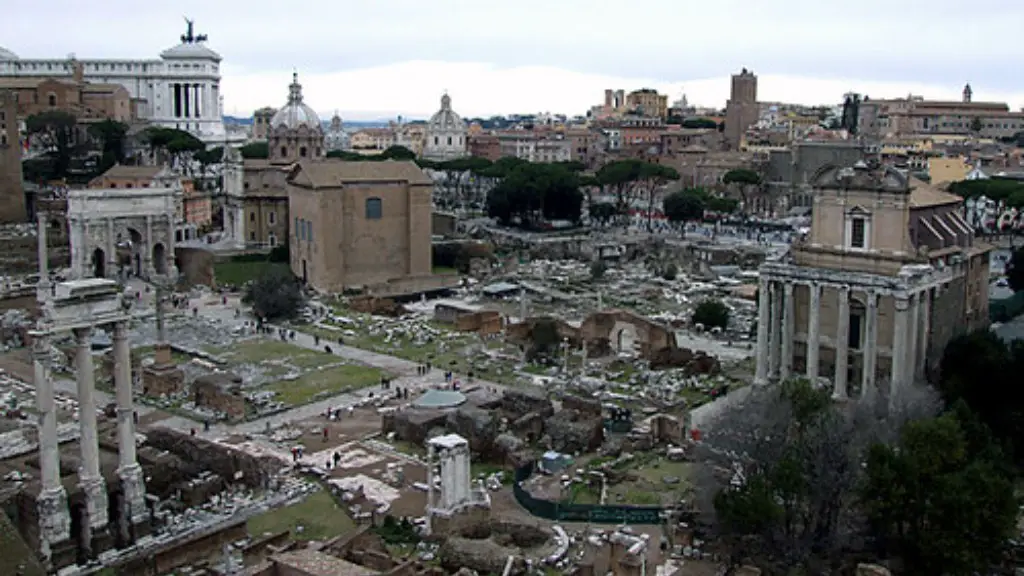Historic Context of Ancient Rome
Ancient Rome is one of the world’s most enduring and influential civilizations. The city of Rome emerged in the 8th century BC as a small town on the banks of the Tiber river. As the area became more politically and economically important, the city began to develop into a major seat of power. The rise of Rome was rapid and unstoppable, and within 200 years it had become the largest and most powerful city in the western world. This meteoric rise to power was largely due to the city’s strategic location, its rich cultural heritage, its impressive engineering capabilities, and its intricate political system.
Why Ancient Rome Was Built
The original settlers of Rome chose the area near the Tiber river as their home because of its many advantages. The river provided a source of water and fish, it provided a ready supply of clay for pottery and shelter from floods, and it also provided easy transportation and access to resources from the surrounding area such as wood and stone. The region was also home to a number of influential traders who provided Rome with the essential commodities needed for their development.
The location of the city was also an important factor in its success. Rome was situated near several major waterways, which allowed for easy trade, as well as access to the Mediterranean Sea. In addition, the region was strategically located near important population, political and trading centers, such as the Etruscan city of Cerveteri, and the Greek colonies of southern Italy. This enabled Rome to take advantage of cross-cultural influences and eventually dominate the Italian peninsula.
Rome’s impressive engineering capabilities also played a major part in its success. The Romans had a great knack for designing efficient systems and structures, such as their iconic aqueducts, which allowed them to bring water into the city. This, as well as their impressive road networks and walls, enabled Rome to expand and flourish.
Political System and Cultural Heritage of Rome
Rome’s political system was also a key factor in its success. In the early stages of its development, Rome was a monarchy, and later it became a republic. This republic was based on the principle of shared power between the different classes of society. This form of government allowed for a strong sense of civic responsibility, as well as a balance of power between different factions. This form of government was remarkably successful, and remains an important part of democratic systems throughout the world today.
Finally, the cultural heritage of Rome was also hugely influential in its rise to power. Ancient Romans were incredibly proud of their traditions and mythology, and these played a major role in their rise to power. Roman mythology and legends provided fertile ground for the development of both religious and cultural beliefs, which enabled Rome to spread its influence across the Mediterranean world.
Evolution of Ancient Rome
The development of Rome began after the first Roman monarchy in the 8th century BC. During this period, Rome saw a great influx of immigrants from the surrounding regions. This allowed for the growth and diversification of the population, which was essential for the success of the city.
The Roman Republic was established in 509 BC, and from then onwards Rome experienced a period of prosperity and expansion, which lasted until the rise of the Roman Empire in 27 BC. This period saw the development of Roman literature, architecture, and engineering, as well as the establishment of a vast network of roads and aqueducts which served to expand the city’s influence.
Decline of Ancient Rome
The decline of Rome began in the 3rd century AD, when its economy began to suffer due to economic mismanagement, barbarian invasions, and political turmoil. The city was sacked by the Visigoths in 410 AD and the Western Roman Empire was finally dissolved in 476 AD.
The end of the Roman Empire led to the rise of new cultures and civilizations in the region, such as the Lombards, Franks, and Byzantines. Rome was eventually rediscovered in the Renaissance period, and its legacy and influence remain a major part of the modern world.
Architectural Achievements of Ancient Rome
The architectural achievements of Ancient Rome are still evident today. The city was home to some of the most iconic structures in the ancient world, such as the Colosseum and the Pantheon. These structures are a testament to the impressive engineering capabilities of the Romans.
The Colosseum, in particular, is a perfect example of the innovative engineering prowess of Ancient Rome. Built in 70 AD, the Colosseum was used for gladiatorial contests and public spectacles, such as dramas and mock sea battles. Such spectacular events were a source of great pride and entertainment for the Roman people.
The Pantheon, another impressive structure, is a testament to the culture and religious beliefs of the ancient Romans. The building, which was dedicated to all the gods of the Roman pantheon, is a perfect example of Roman engineering and design. The dome of the Pantheon is one of the most iconic features of the building, and remains an impressive feat of engineering to this day.
Societal Structure of Ancient Rome
The societal structure of Rome was based on a hierarchical model, with citizens divided into three main classes. The Patricians were the highest ranking class, and they enjoyed a range of privileges and power. The next class were the Plebeians, who were mainly comprised of freemen, immigrants and freed slaves, and they enjoyed fewer privileges than the Patricians. Finally, there were the Freedmen, who were freed slaves, and they had the fewest rights of all.
Despite this hierarchical structure, Ancient Rome was relatively egalitarian when compared to many other ancient civilizations. Rome’s concept of citizenship enabled even members of the lower classes to rise to high levels of power, and to join the ruling elite. This form of government enabled Rome to thrive for centuries, and was a major factor in its success.
Legacy of Ancient Rome
Despite its eventual decline, the legacy of Ancient Rome still stands strong to this day. Rome is still considered one of the greatest cities in the world and its influence is still seen in countless aspects of modern society.
The Romans developed some of the world’s earliest laws, which remain an important part of legal systems around the world. Rome’s engineering innovations, such as its harbor construction, aqueducts and road networks, are still widely used, and its architecture and art are still highly admired.
Rome also left a lasting legacy of culture and mythology which has inspired writers, artists, and filmmakers for centuries. The city’s reputation as a seat of power and influence has made it an enduring symbol of wealth and prosperity, and it remains a source of fascination and inspiration for many people around the world.


